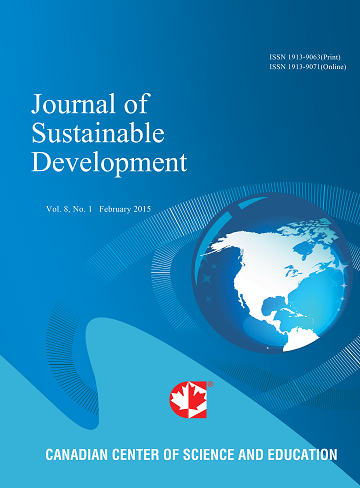Quantifying the Joint Contribution of Demountable Construction and Bioclimatic Design to a Building's Sustainability. Case Study: Beardon Eco-House
- Luis De Garrido
Abstract
This study quantifies for the first time the joint contribution of demountable construction and bioclimatic design to the sustainable level of a building using 11 of the most representative and internationally used GBRS (Green Building Rating Systems).
The scores of a demountable prefabricated building with bioclimatic design (Beardon house) were compared with those of a baseline with conventional design, in both cases using 11 of the most important GBRS. All GBRS have found that demountable construction and biocimatic design provides a higher level of sustainability. However, the resulting scores varied widely and only three GBRS clearly identified the obvious advantages of the combined contribution of demountable construction and bioclimatic design, while the rest value it very little, and four of them barely value it, despite its important environmental advantages. The results of this study have a high level of generalization since the different GBRS have few indicators in charge of evaluating the bioclimatic design and the demountable construction of buildings, and also very few indicators of evaluating their bioclimatic design, so the variations existing between different demountable systems and boclimatic strategies would not change the final score, or would do so very slightly.
If the average score of the three GBRS that have scored the highest is taken into account (CEDES, DNGB, GS), the contribution of the demountable construction to the sustainable level of buildings is 12.34%; the contribution of the demountable construction is 20.28% and the joint contribution of the demountable construction and the bioclimatic design is 32.62%. Therefore, demountabile construction and bioclimatic design are two fundamental pillars when designing truly ecological and sustainable architecture.
- Full Text:
 PDF
PDF
- DOI:10.5539/jsd.v18n6p133
Journal Metrics
Index
- Academic Journals Database
- ACNP
- AGRICOLA
- ANVUR (Italian National Agency for the Evaluation of Universities and Research Institutes)
- Berkeley Library
- CAB Abstracts
- CNKI Scholar
- COPAC
- CrossRef
- DTU Library
- EBSCOhost
- Elektronische Zeitschriftenbibliothek (EZB)
- EuroPub Database
- Excellence in Research for Australia (ERA)
- Genamics JournalSeek
- GETIT@YALE (Yale University Library)
- Ghent University Library
- Google Scholar
- Harvard Library
- INDEX ISLAMICUS
- Infotrieve
- Jisc Library Hub Discover
- JournalGuide
- JournalTOCs
- LOCKSS
- Max Planck Institutes
- MIAR
- Mir@bel
- NewJour
- Norwegian Centre for Research Data (NSD)
- Open J-Gate
- PKP Open Archives Harvester
- Pollution Abstracts
- Publons
- Pubmed journal list
- RePEc
- ROAD
- SafetyLit
- Scilit
- SHERPA/RoMEO
- Standard Periodical Directory
- Stanford Libraries
- UCR Library
- Ulrich's
- UniCat
- Universe Digital Library
- UoS Library
- WJCI Report
- WorldCat
- WorldWideScience
- Zeitschriften Daten Bank (ZDB)
Contact
- Sherry SunEditorial Assistant
- jsd@ccsenet.org
